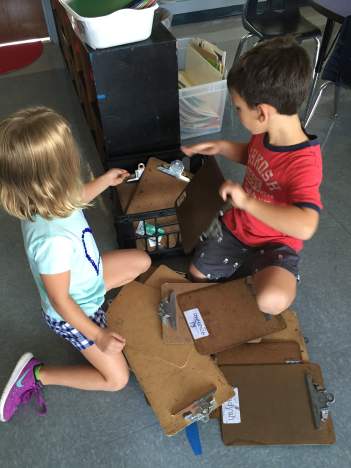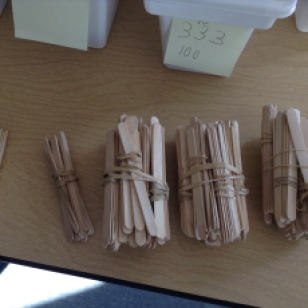I shared our first Mystery Skype experiences with Ms. Turken’s brothers last week and how great the were. After those two great starts, I hit up my Twitter friends to find our next Skype opportunity. Instead of a location Skype, though, I had an offer for a Mystery Number Skype.
We got our day started by answering a easel question that asked: “If you wanted to figure out my mystery number, what questions would you ask?” We practiced with how to ask things that would put the numbers into groups, or to narrow down the whole 100s chart into smaller pieces, rather than just ask “Is it 47?” or “Is your number 82?”
We had a few practice rounds, using 2-digit numbers less than 50 (because we had agreed upon this with our Skyping friends), and then we were ready to go!
Armed with 100s charts and super math questioning skills, we called our new friends, who were in Kansas.
One of the things I love about doing Mystery Skypes (numbers and locations) is watching how kids step to the plate, so to speak, and try things they are unsure about. In this situation, kiddos seem to be more willing to take risks and try things that they aren’t sure is totally correct, to throw out ideas that may not work. Kiddos who may not be first to speak up in class volunteer to ask questions and talk to the other class, and we meet new friends in new places that we can solve problems with–why would you NOT do Mystery Skypes all the time??
I was excited to hear kiddos use the vocabulary we had used on our practice runs, like LESS THAN, GREATER THAN, EVEN, ODD, as well as TENS and ONES. They worked hard to then mark their 100s chart to match the information they were receiving from their friends, and in the end we figured out their number was 20!!
And, you can see in the picture, that our number was 39, which they guessed correctly, too!! 🙂
Who wants to do a Mystery Number Skype with us? We’re keen to try again, and soon we’ll be ready for a 3-digit number!!













































 We modeled the solution to this one in three different ways (which we related to the ways we had done 2-digit addition earlier this year).
We modeled the solution to this one in three different ways (which we related to the ways we had done 2-digit addition earlier this year).













































